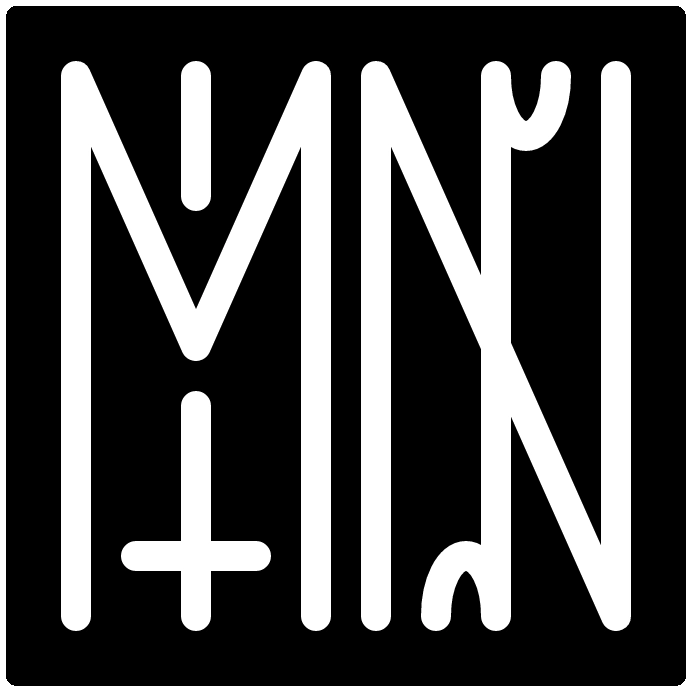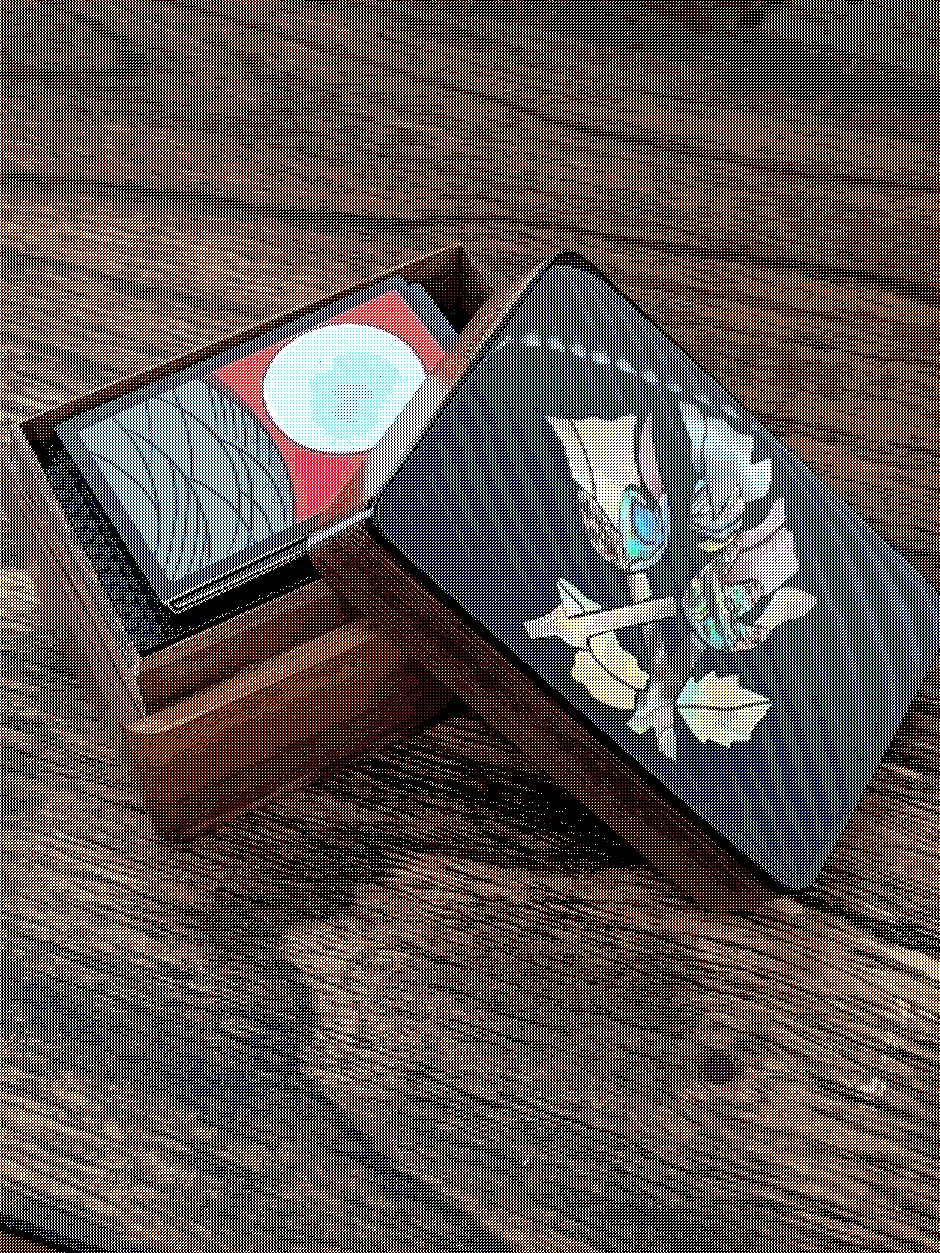hanafuda
hanafuda is a japanese card deck. various games can be played with them.
the cards feature images of flowers, animals, and a few other symbols; but overall, they don’t have any markings such as a suit, number, or color, unlike western decks of cards. rather, cards are organized by the fact that they share the same type of imagery, such as pine trees, or wisterias.
each month is represented by four cards of various types & point values:
kasu- “junk” plain cards (1 point)tanzaku- ribbon cards (5 points)tane- animal cards (10 points)hikari- “bright” cards (20 points)
learning the cards
before learning any games you can play with hanafuda, you need to be able to identify each card with its month, as well as its type of card and its value. below is an enumeration of the cards and their values. note the images used below are used licensed under CC BY-SA 4.0 and are from wikipedia.
| month | flower | hikari (20) | tane (10) | tanzaku (5) | kasu (1) |
|---|---|---|---|---|---|
| january | pine | 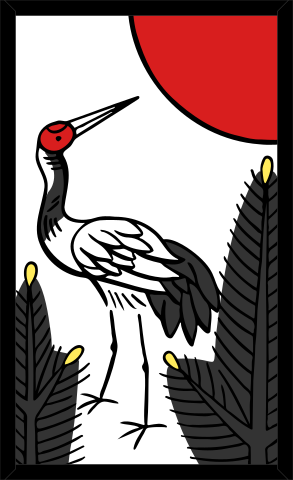 |
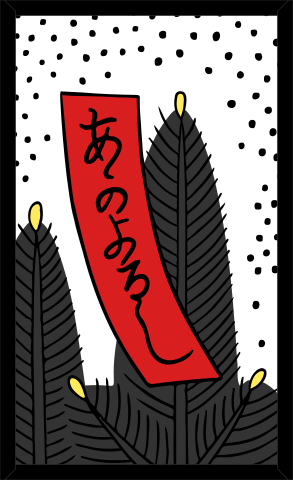 |
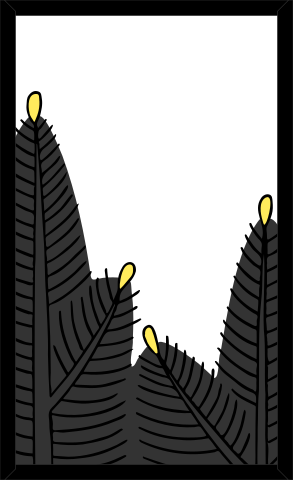 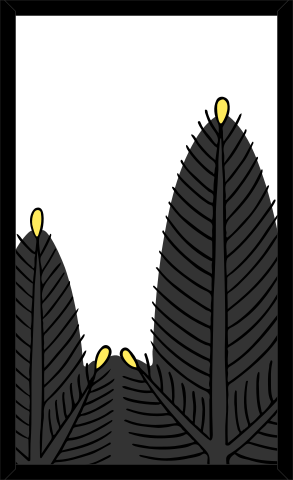 |
|
| february | plum blossom |  |
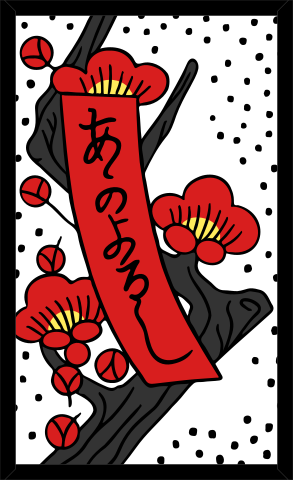 |
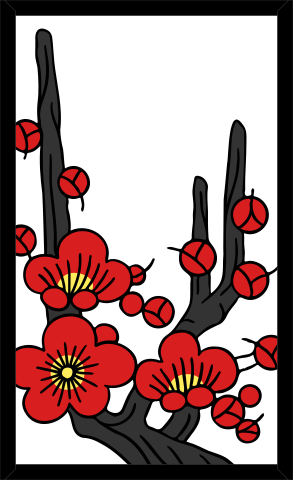 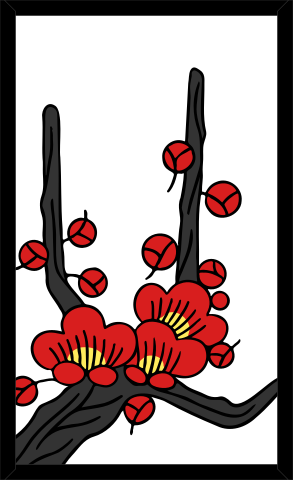 |
|
| march | cherry blossom | 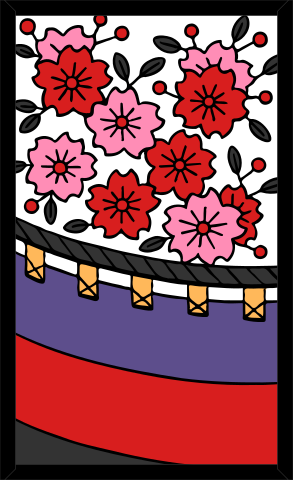 |
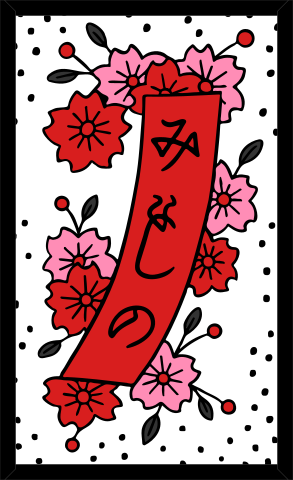 |
 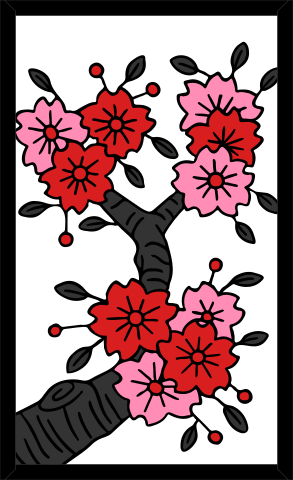 |
|
| april | wisteria | 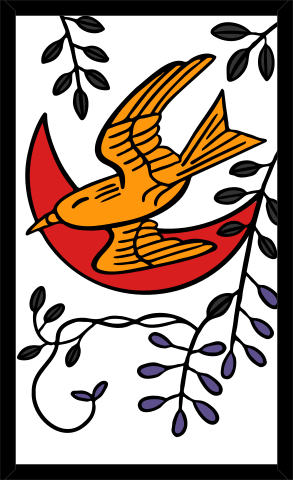 |
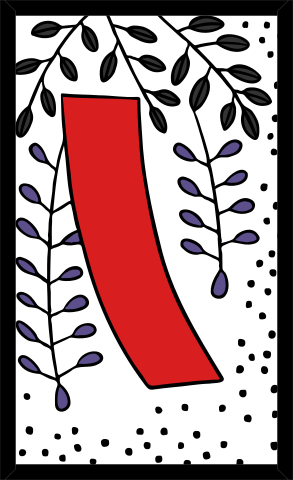 |
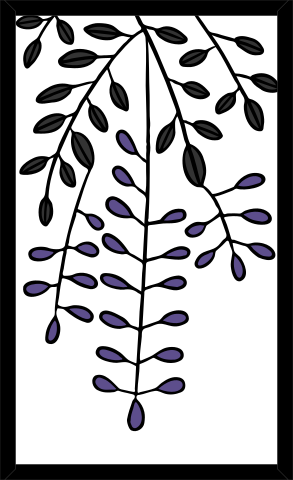 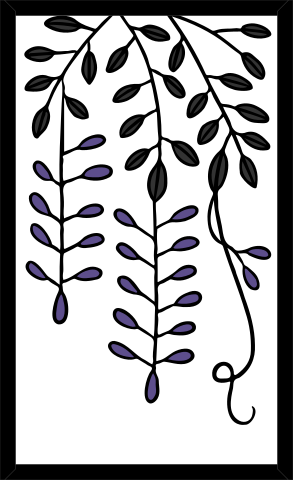 |
|
| may | iris | 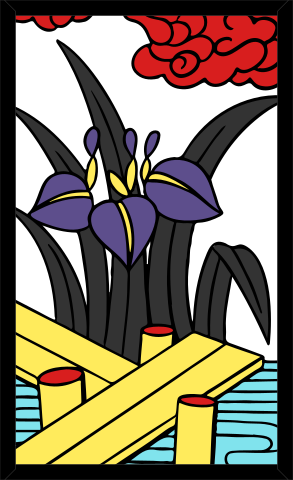 |
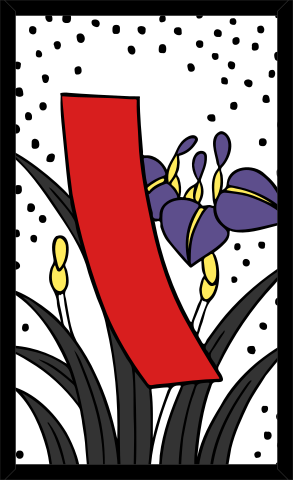 |
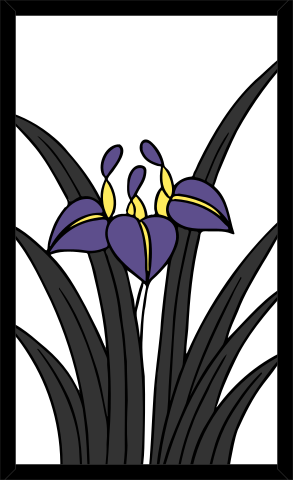 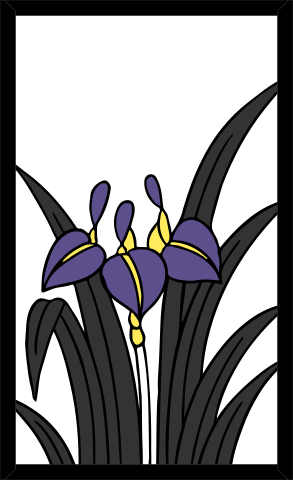 |
|
| june | peony |  |
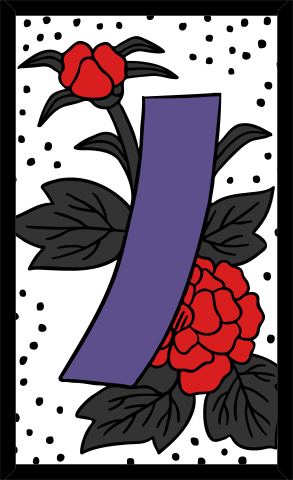 |
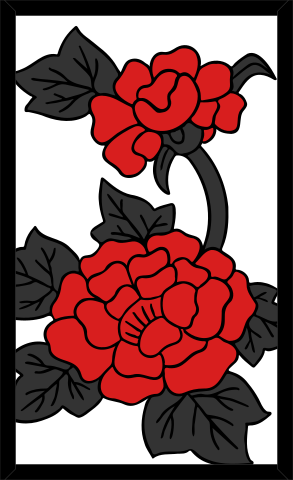 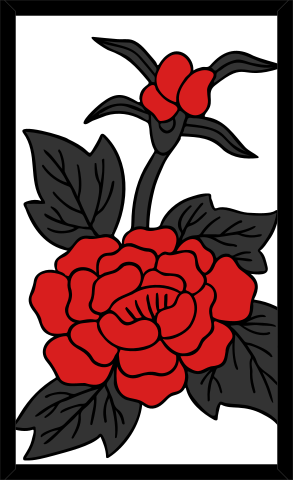 |
|
| july | bush cloer | 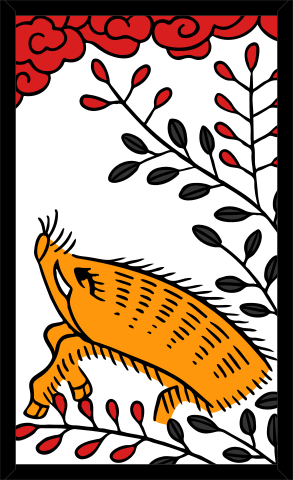 |
 |
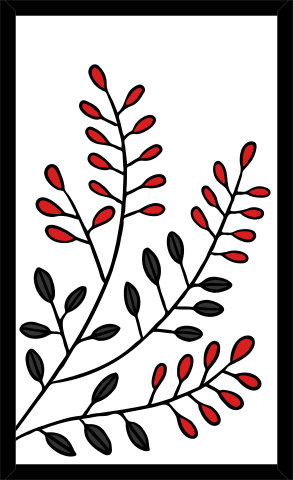 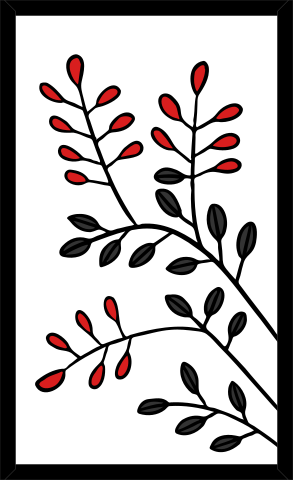 |
|
| august | susuki grass | 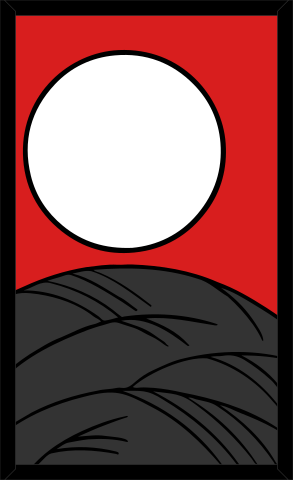 |
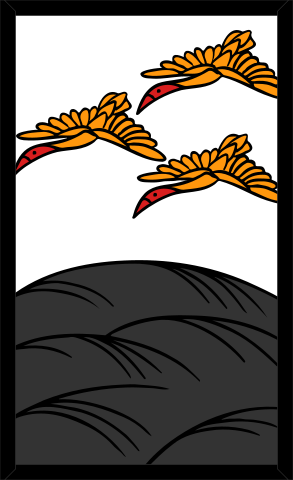 |
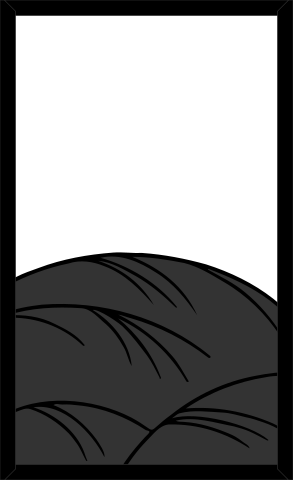 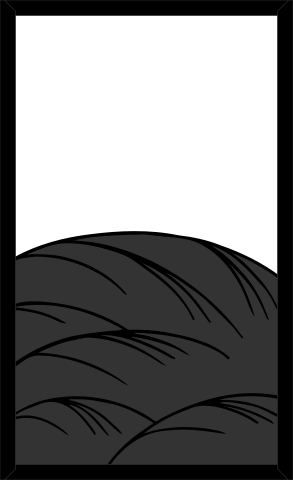 |
|
| september | chrysanthemum | 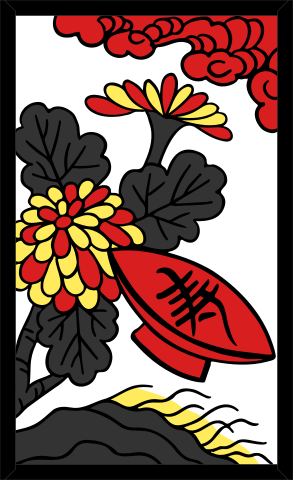 |
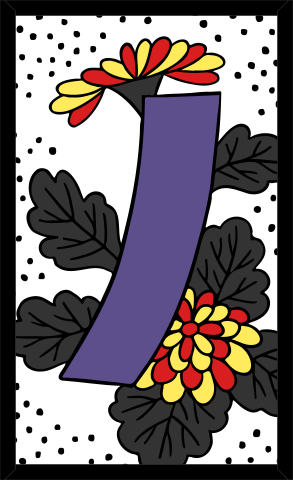 |
 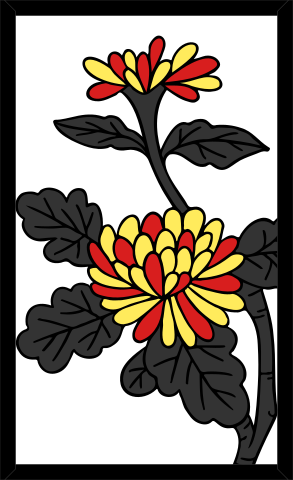 |
|
| october | maple | 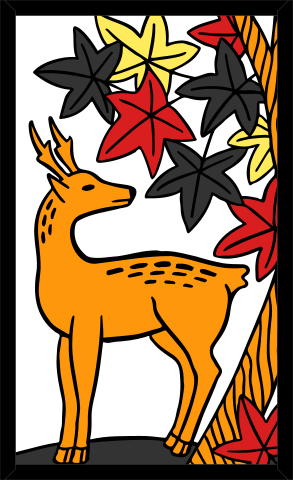 |
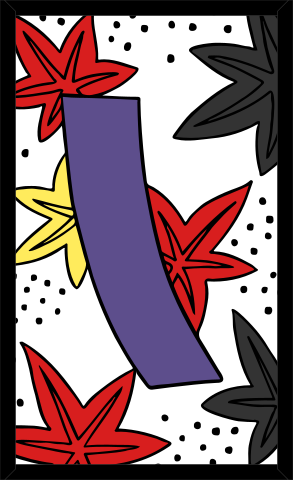 |
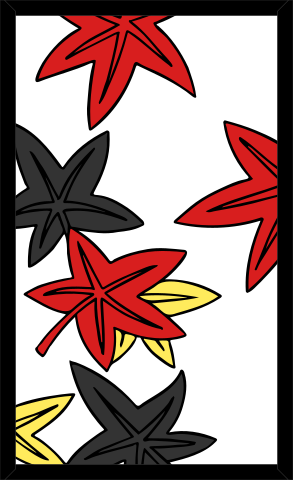 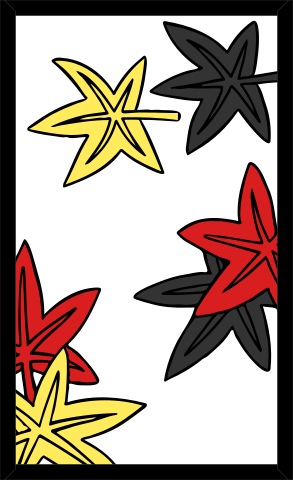 |
|
| november | willow |  |
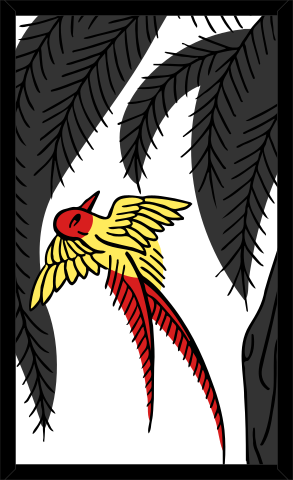 |
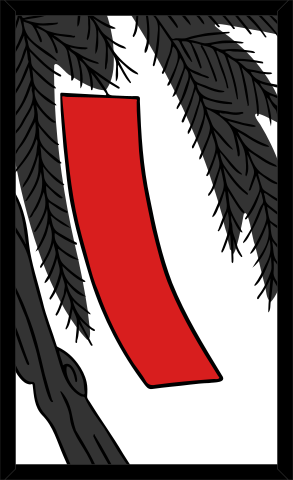 |
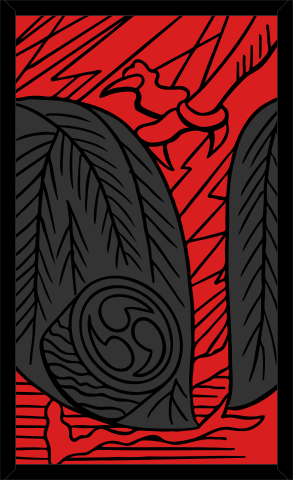 |
| december | paulownia |  |
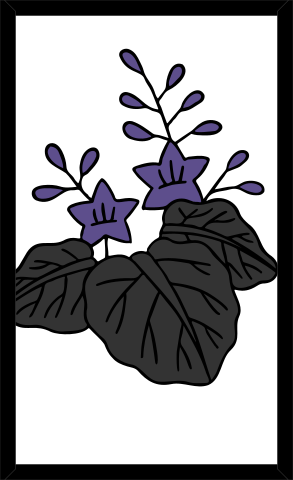 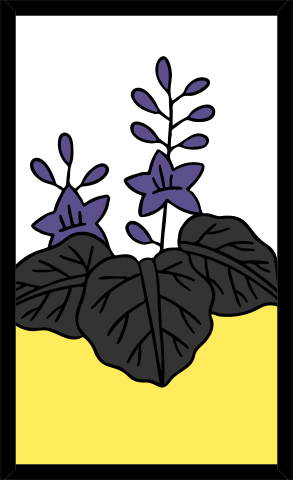 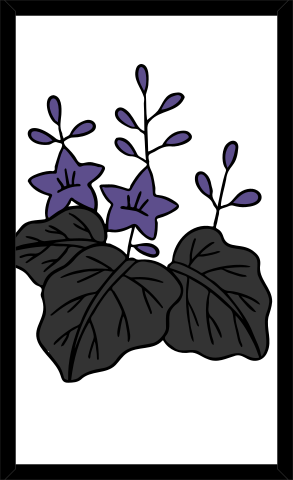 |
hikari (bright) cards
one of the easiest ways to get started is to first memorize the 5 hikari (bright) cards:
| card | month | name | mnenomic |
|---|---|---|---|
 |
january | the crane and sun | two major elements; a rising sun and a bird makes it special. also the sun is bright. |
 |
march | the curtain | i always imagine the curtains are decorations for a festive night - also decoration are bright |
 |
august | the full moon | we all know the full moon is bright! and full moons are often special. |
 |
november | the rain man | the rain man is the only human in the deck. he is “bright” because he brought an umbrella. |
 |
december | the chinese phoenix | the phoenix rules over all others birds. its the king. and thus its special/bright. |
tane (animal) cards
- after that, everything that looks like an animal, is an animal. this also includes the butteryfly.
- the exceptions:
- the eight plank bridge

- the sake cup

- the eight plank bridge
tanzaku (ribbon) cards
the tanzaku cards are split up into three groups:
- red tanazaku
- blue tanazaku
- poetry tanazaku
kasu (“dregs”) cards
the kasu are the rest of the cards that don’t fit into the other ones, they are all plain, and don’t feature any animals, ribbons, or other major motifs. the one exception:
lightning card
The lightning card is an exception: it doesn’t look plain but is a kasu (1-point) card.
some people play with it as a wildcard.
is an exception: it doesn’t look plain but is a kasu (1-point) card.
some people play with it as a wildcard.
referenced by:  traditional-deck
traditional-deck
